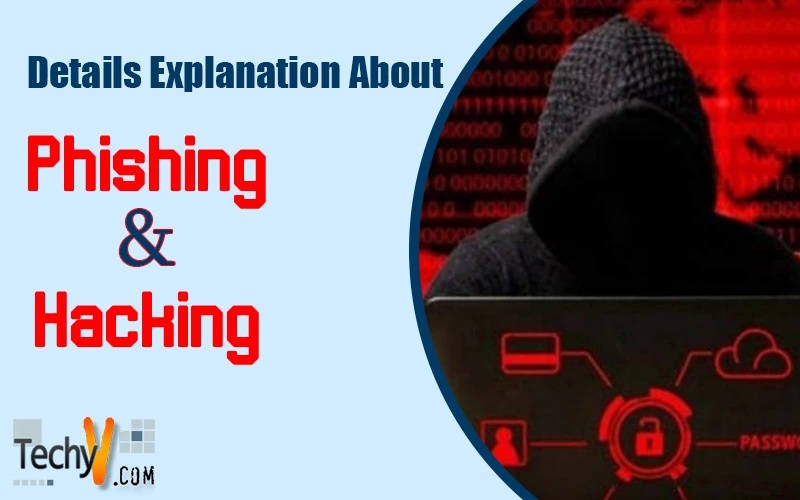Let’s begin by safely stating; Hacking is like robbery while phishing can be equated with conning.

As expected, the term Phishing has been inspired from fishing because the concept of throwing a bait is used in this. While you are trying to browse through some website, if a third party camouflaged like a trustworthy entity seeks to avail valuable information, like credit card number, passwords, IDs, etc. mostly for malicious activities; that will be considered as phishing. Naïve users over the web are made to enter necessary data into a fake portal primarily, which they are led to via some email spoof or chat link. Sometimes the fake websites are tough to differentiate from the legitimate ones. Phishing is essentially one of the ways hackers can attain your personal information. The messages on the emails would often look like this:
“We suspect some unauthorized entity tried to access your account. Please enter your username and password in the given link for verification.” And once you innocently nod along, you have officially caught the bait and are just about to be hooked.
How to handle such situations, you say?
Firstly, official websites and legitimate companies would not ask for such username and password confirmations via email or text message. So, you could just move such messages to the trash.
Do not click on those links. The sites they direct you to are quite quickly deceitful. Expert phishing parties would make their websites very believable. If you need to verify any weird activity on any of your social media accounts, directly open the website’s URL and check. If it says anything related to your bank account and you are concerned. Always call or check the online portal personally.
There are unusual types of phishing. The first is the standard phishing, via emails. The second is target-specific phishing. The attackers gather information about the victim before the contact with the person or company. Then there is Clone phishing, which’s hard but highly efficient. A previous original email with authentic data entry link is duplicated and morphed with a malicious link. Then it is mailed as a re-check of the original. Lastly, when you aim at the big fish, it’s termed, Whaling. Higher executives, people at senior ranks in multinational companies are prone to being easy victims. Here phishing is done under the cover of a customer complaint or significant business deal.
Coming back to Hacking, Hackers are mostly individuals who make an attempt to break into your accounts. Then they commit embarrassing activities like posting photos, sending messages, etc., posing as you the whole time. In extreme cases, they loot you leaving your bank accounts empty and echoing like a brass vessel. There are different kinds of hackers out there. Some are white hat hackers who hack into accounts for the benefit of some organization or the government. There are black hat hackers who do all this for petty personal gain or just being mischievous. Most of the time white hat hackers undo what their cousins in black hats have done. Then there is the last race, hacktivists who sometimes tend to commit cyber-terrorism. Hacking, in today’s world, can necessarily be called skill. Sometimes a creative technology and sometimes dark art. There is not much you can do to prevent hacking. But yes, you can make sure your passwords are unyielding, their meanings unrelated to you, and all accounts should have different passwords. Otherwise, a hacker can ruin your life irreversibly.
Be it phishing or hacking, one has to take internet security seriously to avoid such roadblocks. There are organizations like the APWG that believe in acting on the phrase ‘see cyber crime and immediately report the cyber crime’. Make sure your security system updates automatically and you always stay aware of the possibility of such malice around you.


















